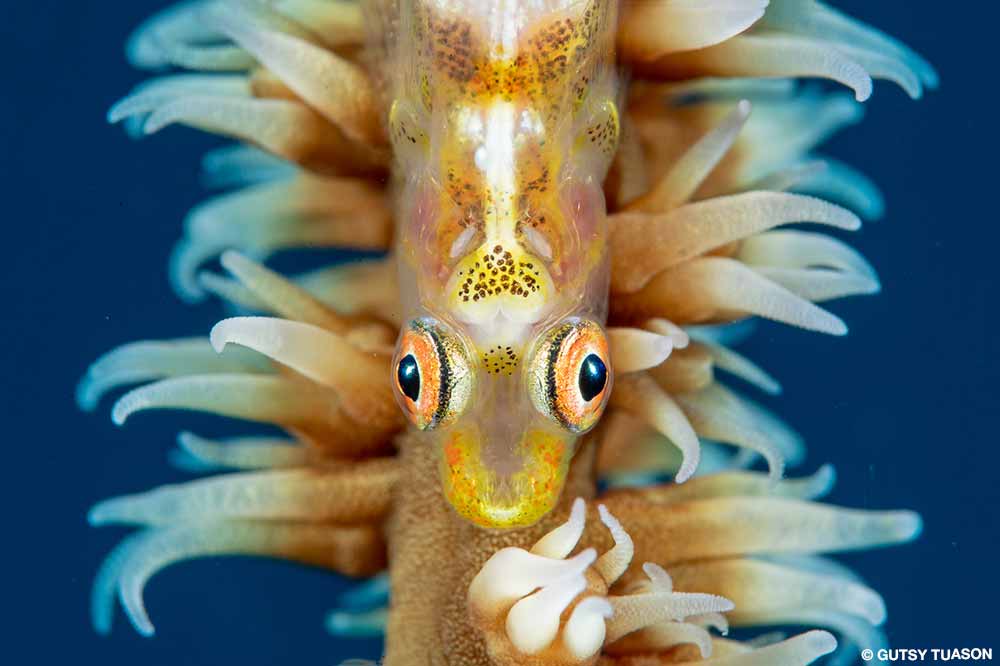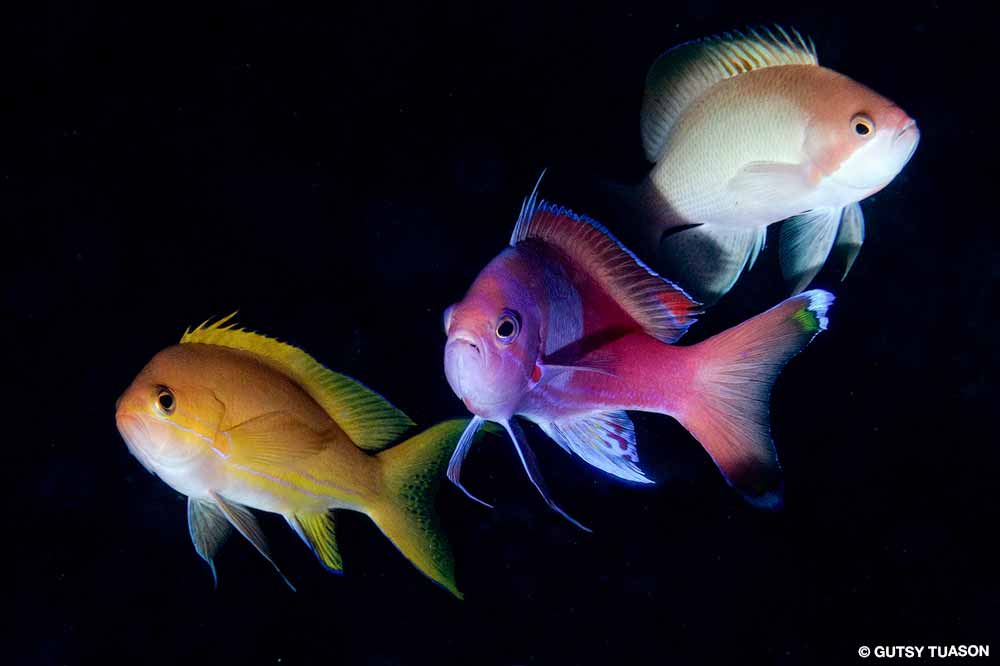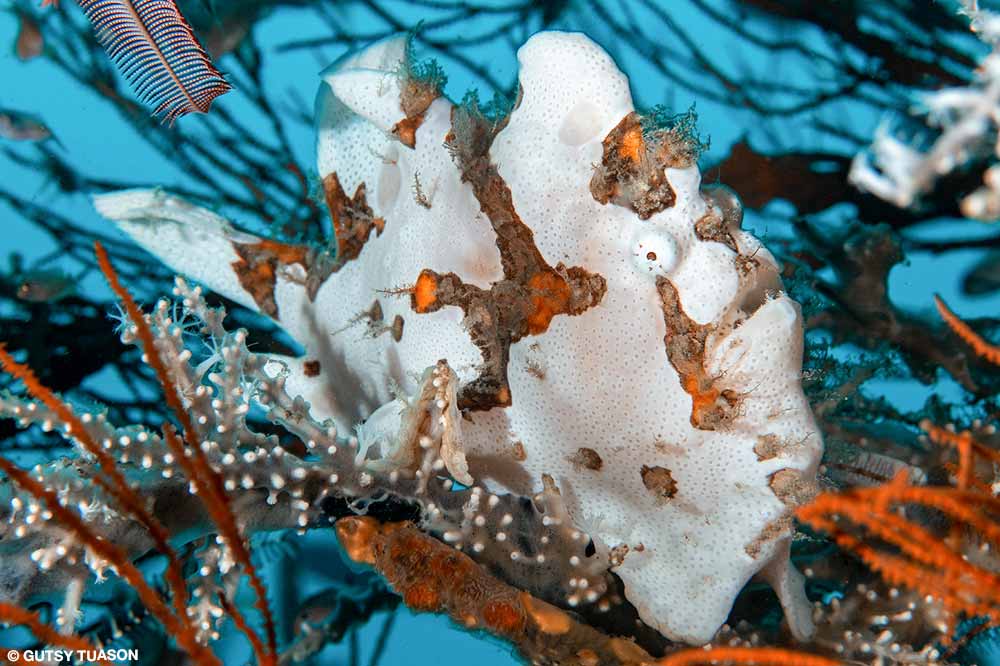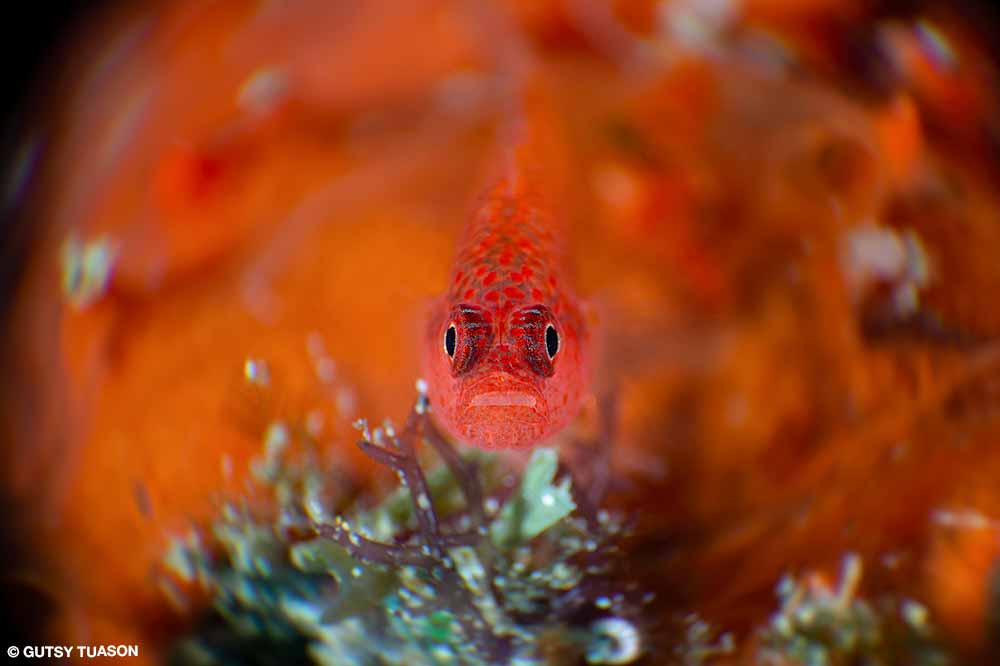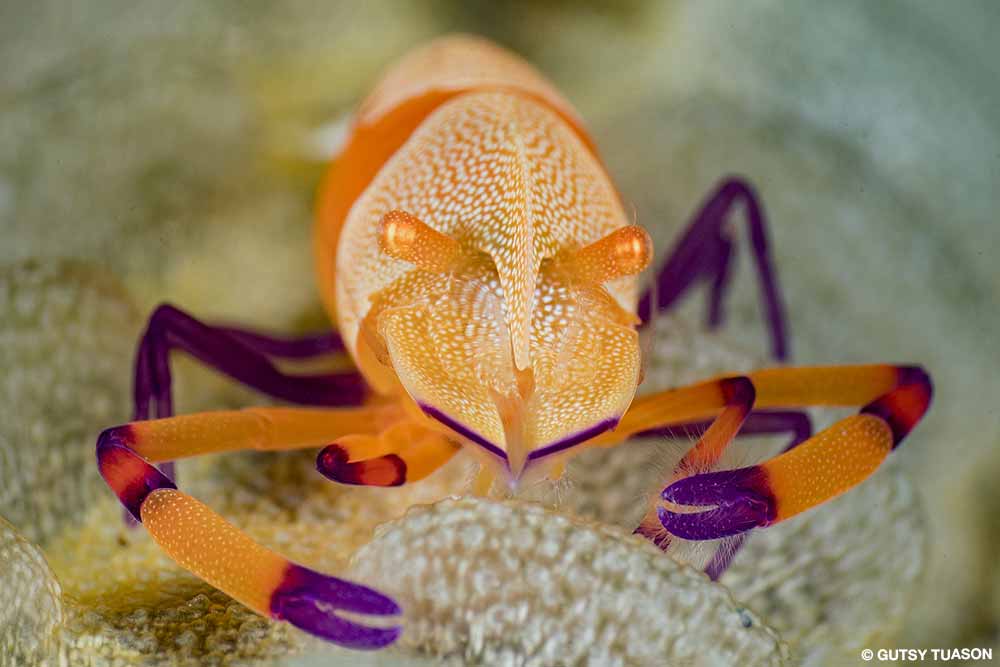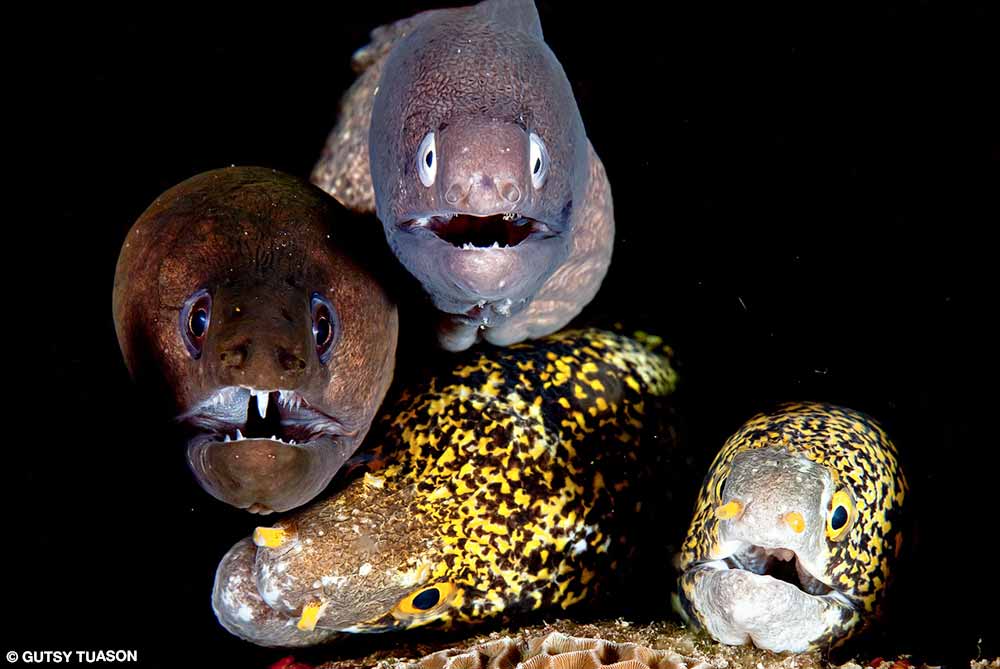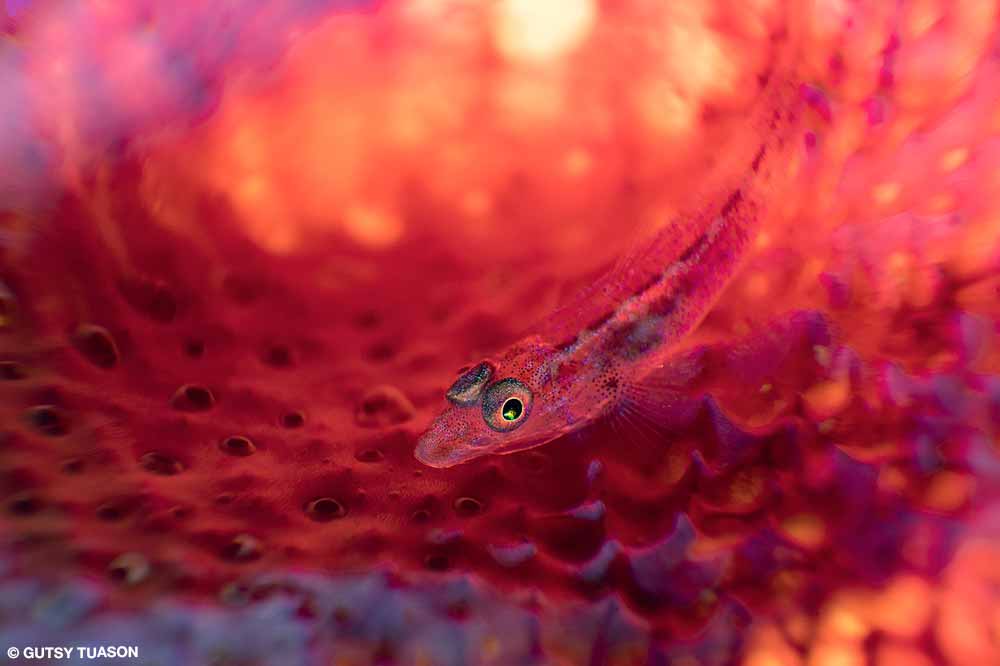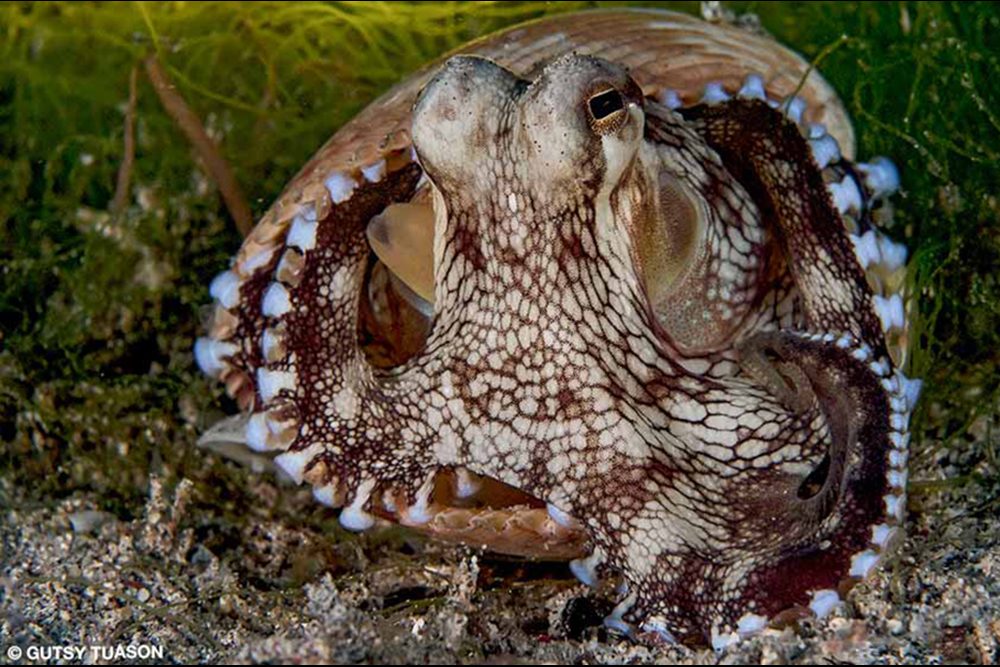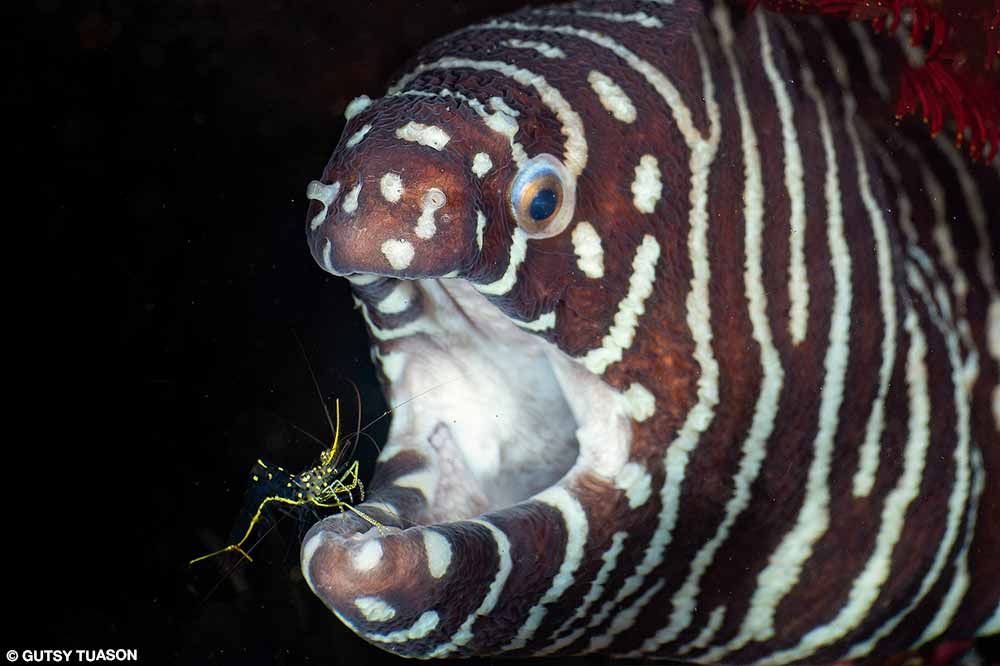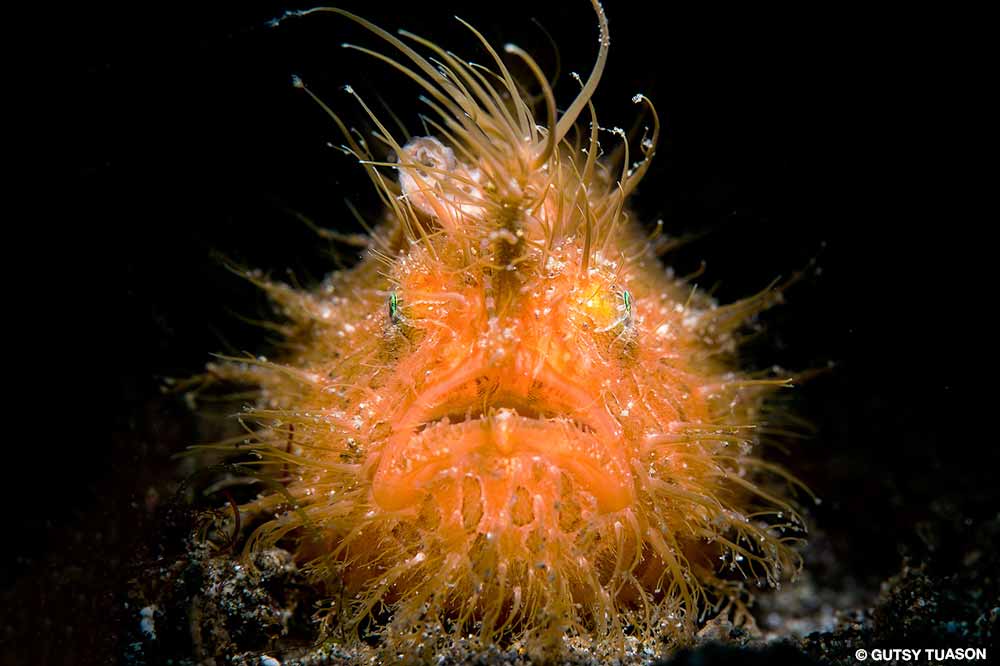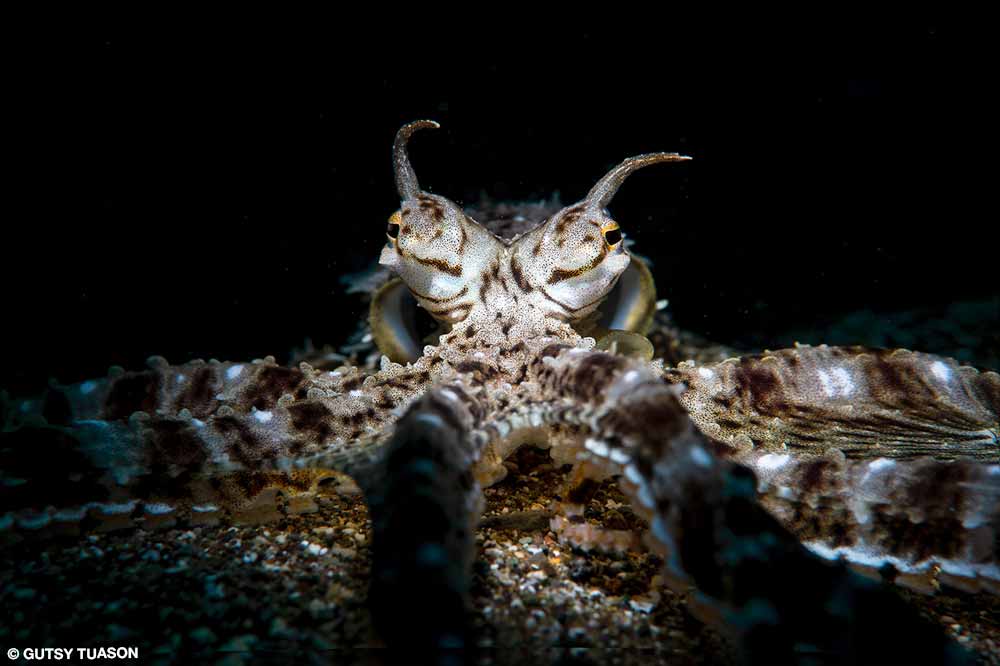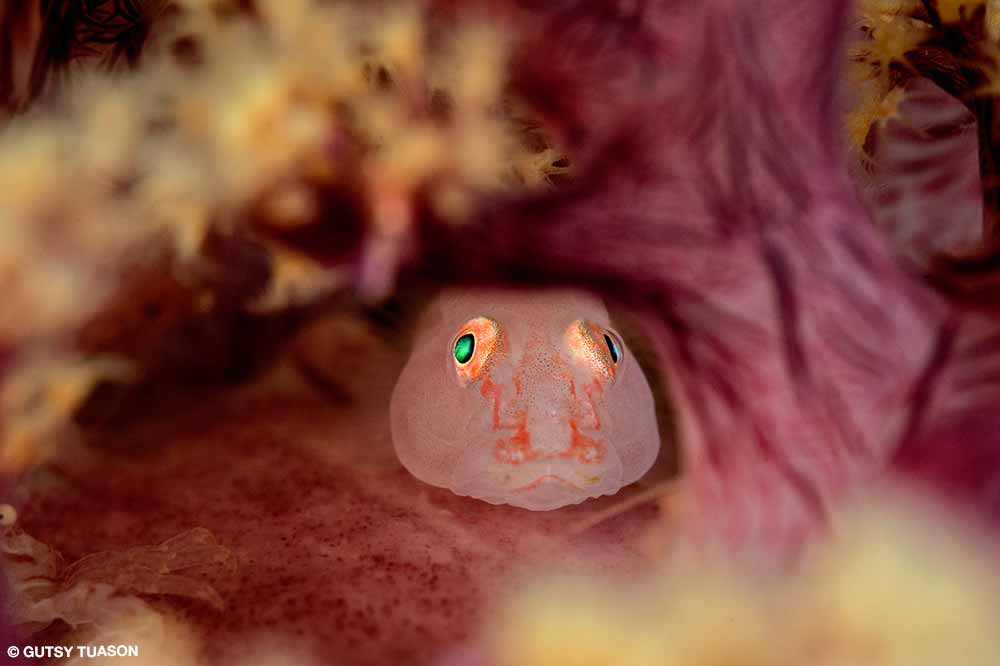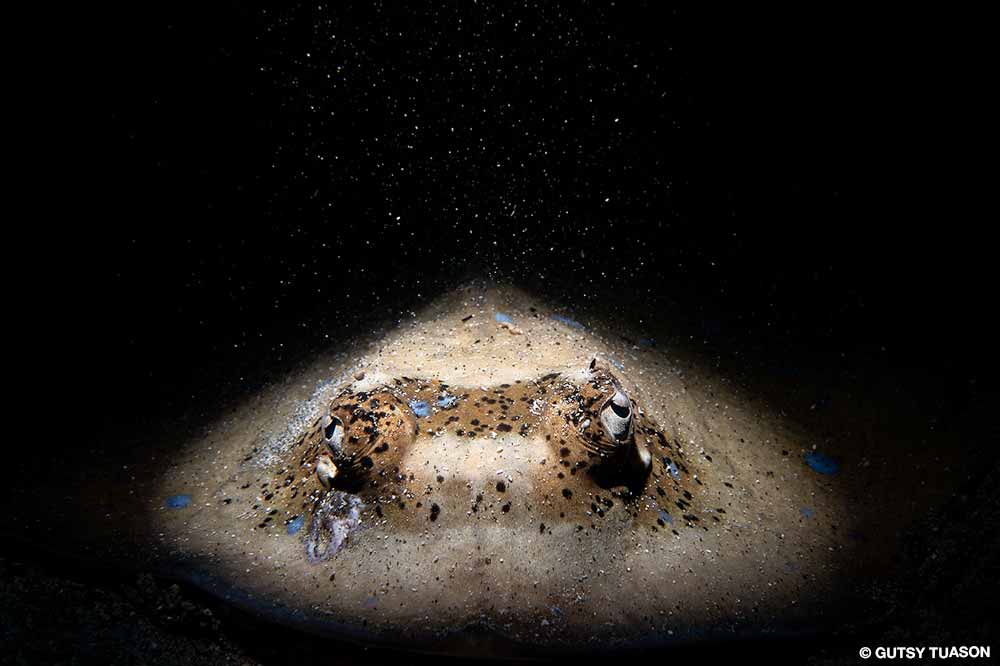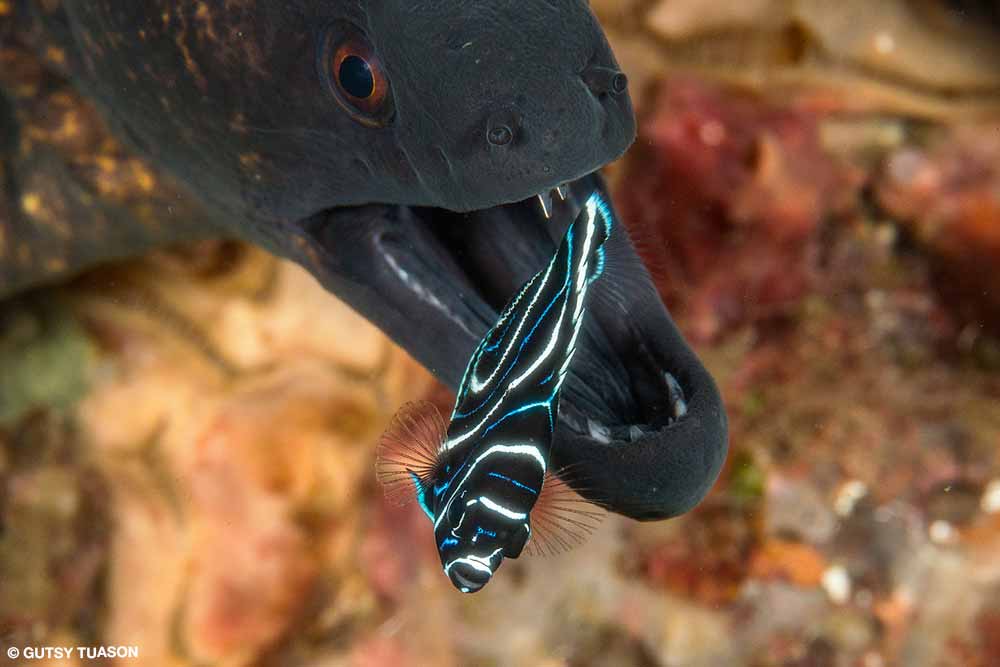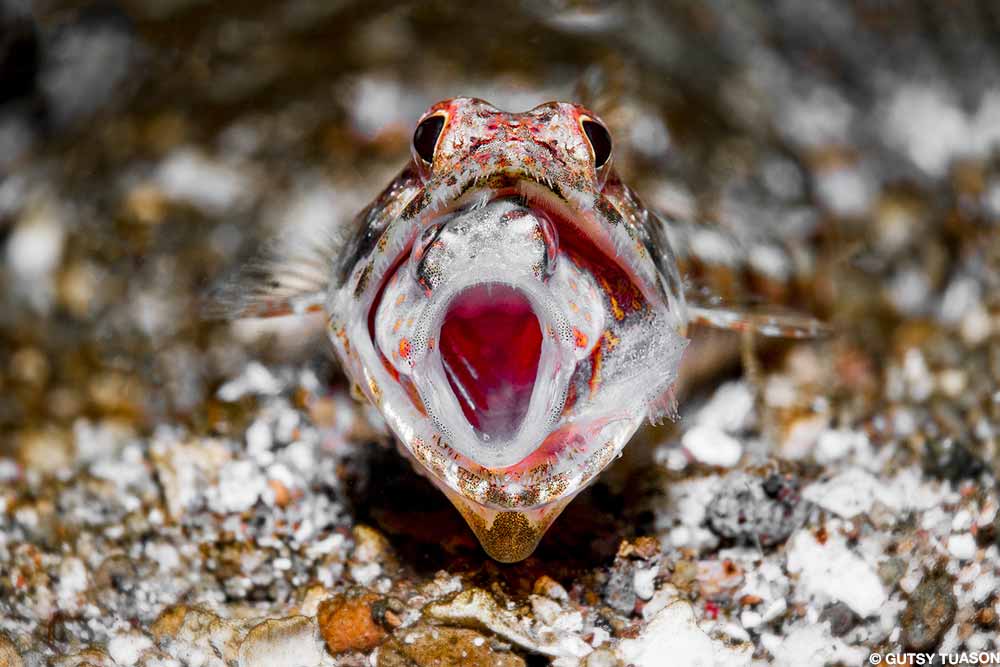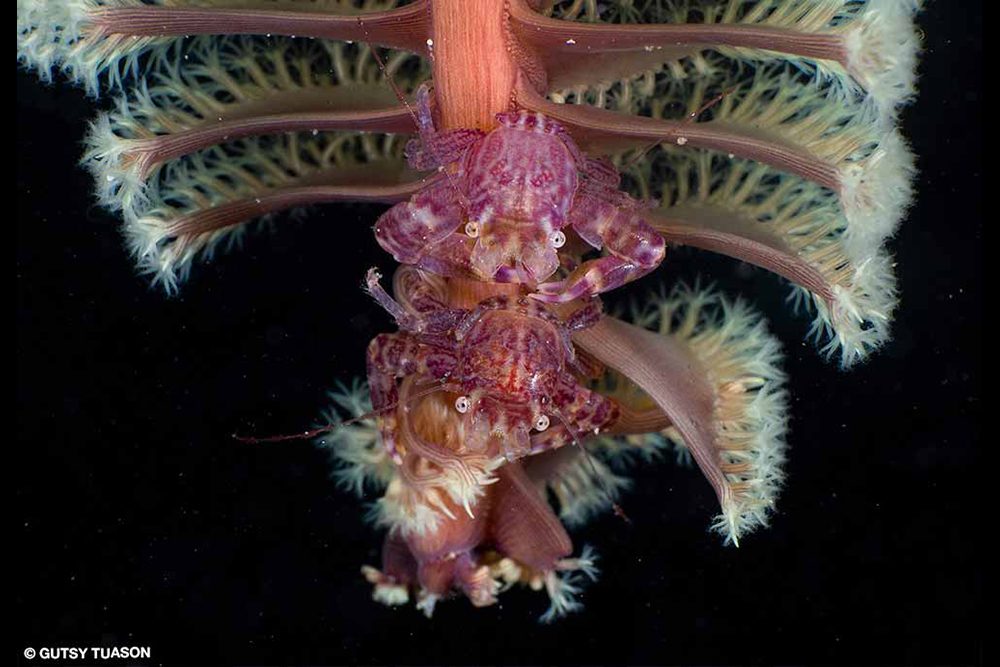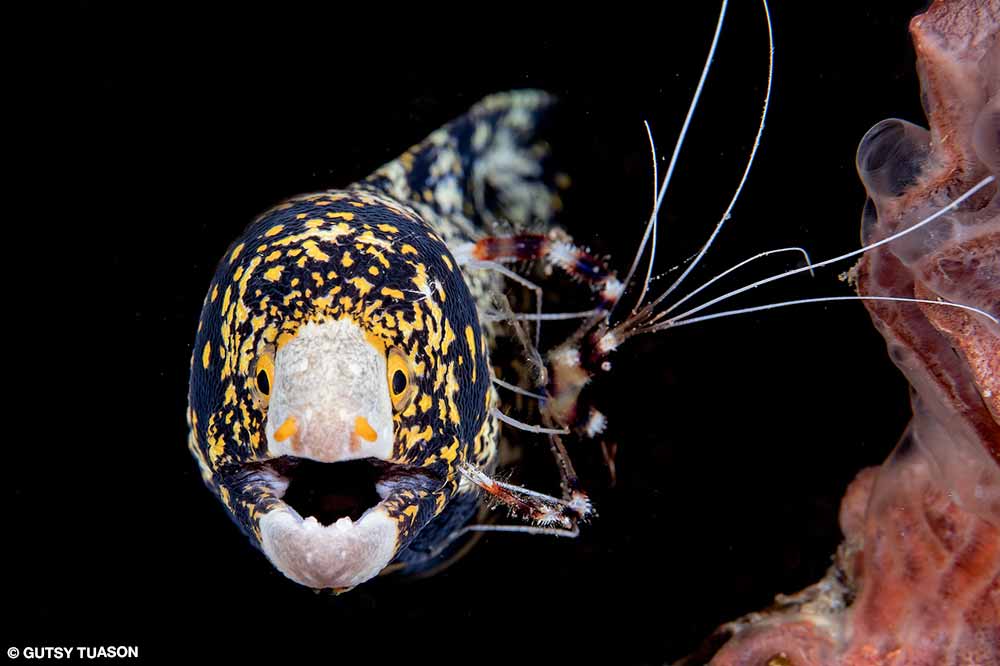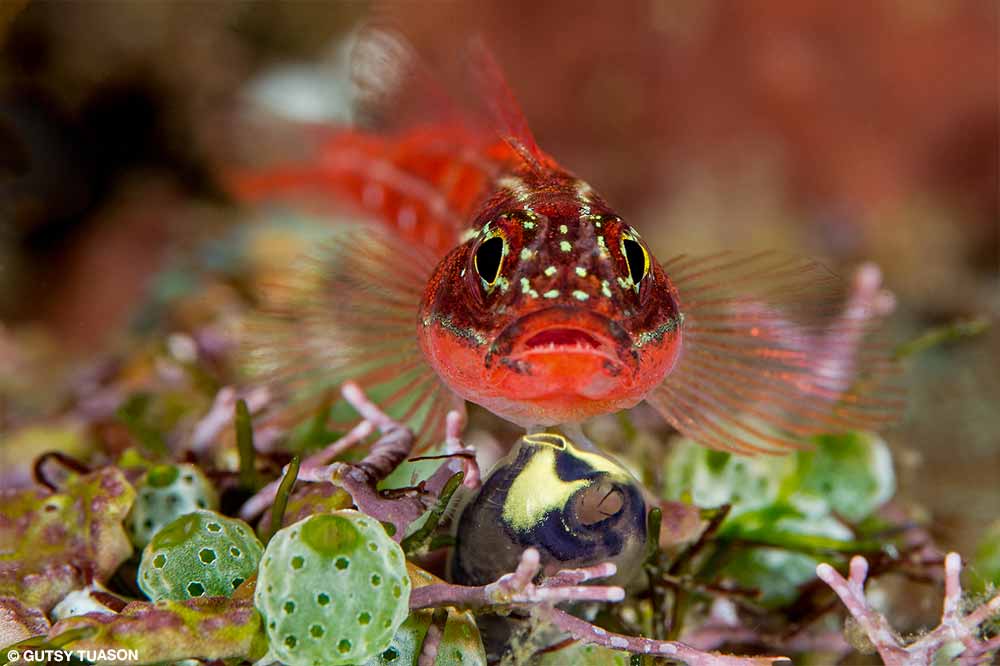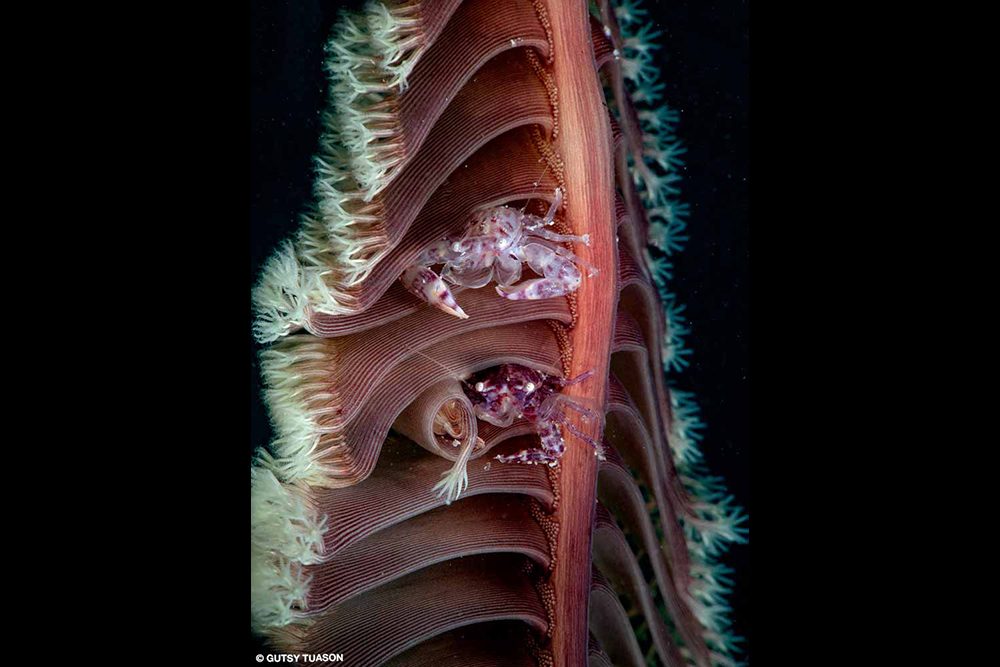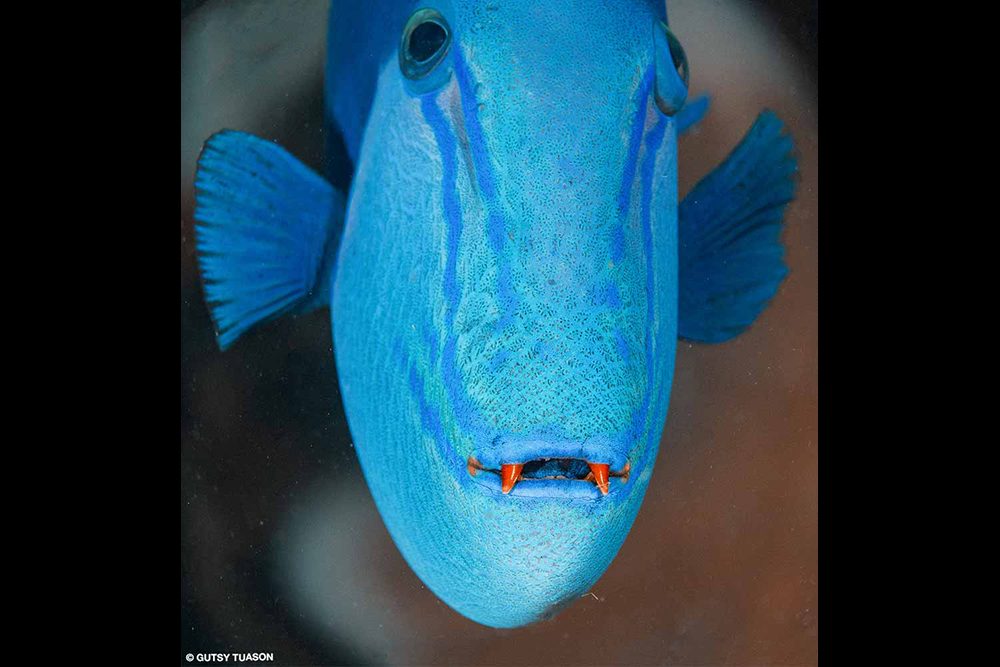I FIRST MET SCOTT “GUTSY” TUASON at a Diving Equipment and Marketing Association (DEMA) trade show in 2016. “You need to see his blackwater work. You’ll be blown away,” Marc Bauman of Sam’s Tours said before introducing us. Tuason had just published Air Hitam / Biru Terbuka. As we sat in the Sam’s Tours booth, I thumbed through the book’s pages amid the distractions of a trade show. I was indeed blown away and later was able to give the photos and captions the slower pace and appreciation that a fine coffee-table book deserves. The book features blackwater macro photography and pelagic encounters with whales and sharks (hence the “open blue” appellation), but blackwater photography has been Tuason’s singular focus for quite some time.

We connected on Instagram, and I became more familiar with his vision’s excellence and eclectic nature with each photo. His macro photography — not just blackwater but also general coral reef minutiae — surprised me the most. So much of macro photography is reminiscent of a documentary, yet Tuason manages to infuse each image with artistic execution through his use of composition and light. Here is a glimpse of the man behind the photos.
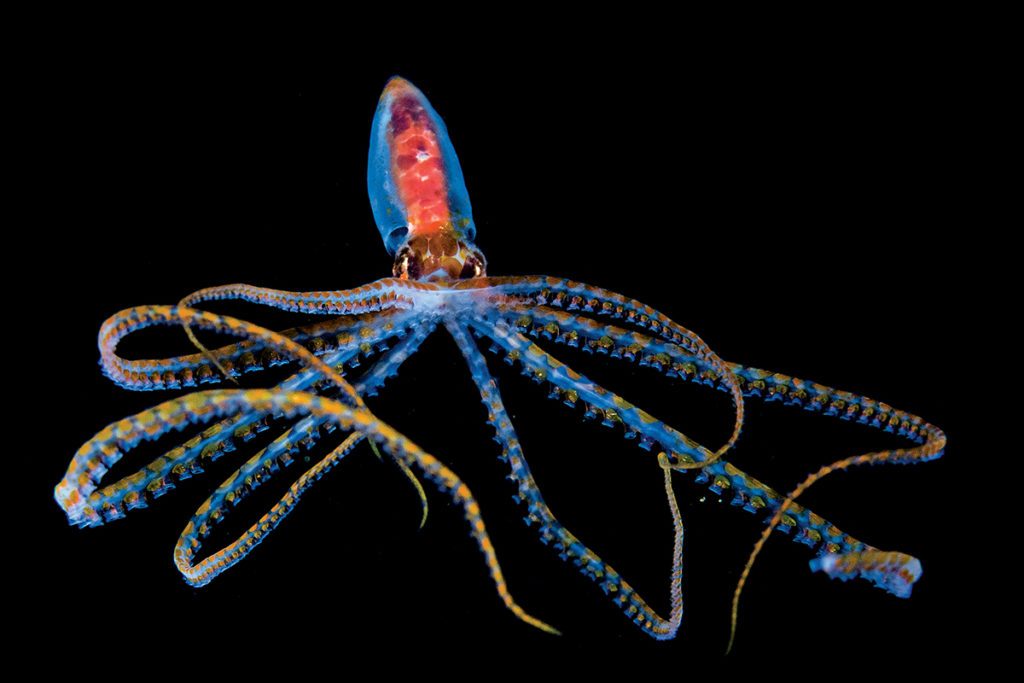
Untuk mencapai tingkat keunggulan seperti itu menunjukkan komitmen terhadap fotografi bawah air sebagai gaya hidup. Bagaimana Anda bisa sampai pada titik tersebut dalam hidup Anda?
Saya rasa pencerahan saya datang pada tahun 1980-an setelah melihat pekerjaan yang dilakukan David Doubilet di National Geographic, apa yang Anda lakukan di Penyelam Kulit majalah, dan karya terobosan oleh Chris Newbert dalam bukunya Di Dalam Laut Pelangi. By then I had a Nikonos V and a 35mm lens, but I wasn’t getting photos like those I saw on your pages. Wide-angle shots were especially hard for me to figure out. Using a 35mm lens meant I had to get farther away if I wanted to shoot something large. I didn’t know about water’s density compared to air and the blue cast subjects have at more than about 4 feet away, so I kept shooting from 15 feet and coming home with blue and poorly focused photos. Then I figured out the secret sauce. You all had the 15mm lens for your Nikonos cameras and could capture large subjects from a short distance. It seems so obvious now, but it was a revelation then.
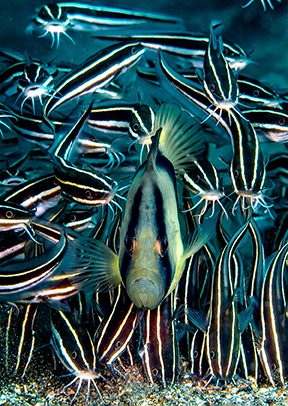
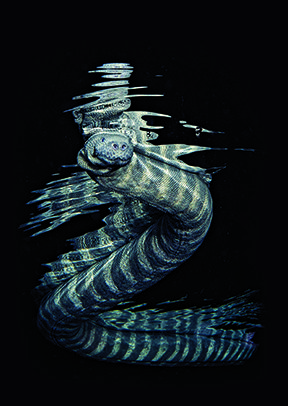
Bagaimana Anda bisa sampai pada titik itu? Apakah Anda sudah terlibat dalam fotografi, atau apakah Anda seorang penyelam terlebih dahulu?
For that, we need to go back to my time as a child in Australia and then the Philippines. My mom is Australian, my dad is Filipino, and they met as students in Australia. We lived in Australia for a while, but I was too young for that to be formative for me in terms of diving. Once we moved to Manila, I was only 75 miles from Anilao. This was 1976, and I was just 8 years old, but we often went to Anilao. I snorkeled until I was about 10. My dad saw me tagging around in the shallow waters above him while he dived and finally said, “Here’s a regulator; follow me.” By 1980 I’d done my junior open-water course, and by 1985 I had my advanced certification.
Anilao remained a weekend getaway for my dad and me. By 1979 I had evolved from finishing whatever air was left in my dad’s bottle to finally having my own gear. But I think the real game changer came when a Spanish professional photographer, who then-president of the Philippines Ferdinand Marcos had commissioned to do a coffee-table book on our country’s visual wonders, hired my dad and Eduardo Cu Unjieng as dive guides. The team booked a three-week liveaboard dive trip to visit all the Philippine dive hotspots, which divers from North America travel around the world to visit. It was like a backyard to us, even though it was all new to me at the time. I had a 50-cubic-foot tank, a horse collar buoyancy compensator, and my own regulator, and I was keen to take it all in.
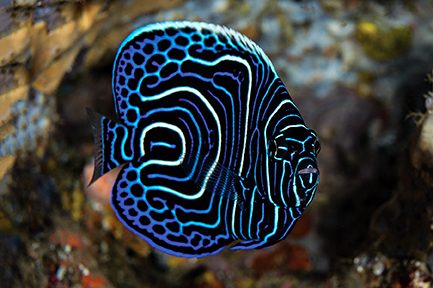
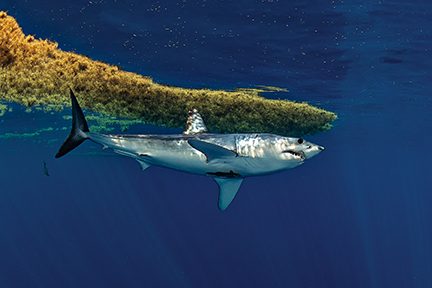
Bagaimana dengan fotografi bawah air? Apakah ayah Anda juga seorang penggemar foto?
Memang benar. Dia memiliki Nikonos III dan akan mencoba menyimpan beberapa frame untuk saya potret di akhir penyelaman. Saya akan menimbun frame-frame itu sampai saya melihat sesuatu yang berarti, dan kemudian saya akan memotretnya. Hal itu menanamkan disiplin yang baik yang selalu ada pada diri saya bahkan setelah bertahun-tahun kemudian. Pada ulang tahun ke-16, saya mendapatkan peralatan impian saya: Nikonos V dengan lensa 35mm dan strobo SB103. Saya membawa peralatan itu ketika saya pergi ke Universitas Tampa di Florida dan mendaftar di program biologi kelautan.
I’m not sure that I was passionate about marine biology, but it allowed me to dive. I soon figured out there was more to the program than diving, and most people who had a career in that field didn’t dive much. By then I was getting into photography and took a fine art photo class from Lew Harris, who inspired me and remains a dear friend. They had only two classes, an introductory class and “special problems,” so I took the same problems class every semester for two years, always trying to shoot a better photo or do a better job with it in the darkroom.
Eventually, I got a bachelor’s degree in economics, which I didn’t need for my first jobs after college: teaching tennis and cleaning yacht hulls. I also worked in a framing shop to earn money, but in the end my dad told me what I already knew: “You aren’t American, you are in jeopardy of overstaying your visa, and you need to come home.”
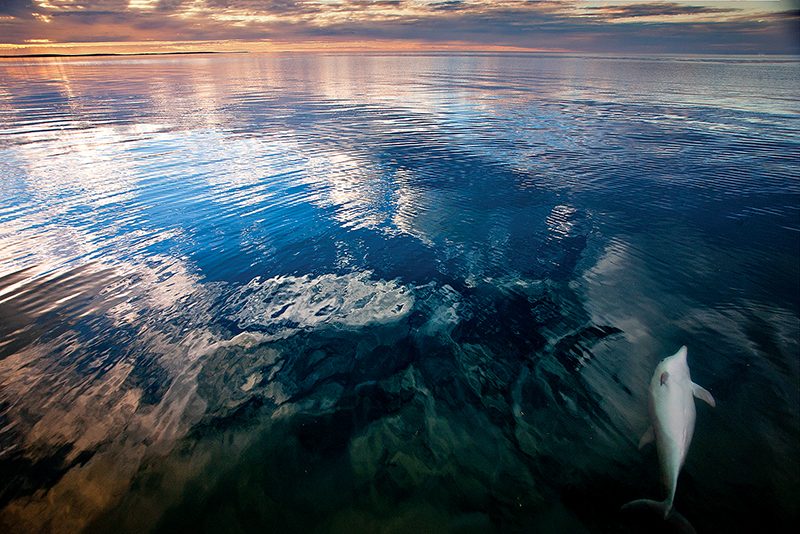
Apa arti pulang kampung bagi Anda sebagai lulusan muda dengan gelar sarjana ekonomi?
Itu berarti bekerja dalam bisnis keluarga. Kami telah menjadi produsen senjata api selama 40 tahun, dan saya menjalankan sisi grosir. Saya akui sekarang bahwa saya tidak tertarik dengan bisnis ini. Mendapatkan waktu cuti itu sulit, dan yang ingin saya lakukan hanyalah pergi dari pekerjaan untuk menyelam dan memotret. Saya berhasil mengukir cabang bisnis yang lebih cocok untuk saya. Ide saya adalah menciptakan ruang ritel untuk menjual peralatan kamera bawah air dan perlengkapan golf, tenis, squash, dan menyelam selain senjata api.
There was a photo print shop established in 1905 called Squires Bingham Photo Print, and they mostly created picture postcards. By the 1930s it had expanded to include sporting goods. My grandfather bought the business in 1941, shortly before the Japanese invaded the Philippines. I always found it interesting that the family business had its roots in photography before growing into our sporting goods store, Squires Sports Philippines. It is now my business, and while we sell dive gear, we aren’t a dive shop. We don’t do rentals or air fills, but we do have high-end retail. We also do dive travel, and I get to lead the tours. Before the pandemic, some of our more popular trips were to Tubbataha, Cocos, Socorro, Tonga, and Norway, where we focused on orcas. I will be back to Tubbataha soon, and it’s a good feeling to know our travel business is getting active again.
Do you still get to dive Anilao much since it’s close to your home in Manila? I see so much amazing blackwater work from there, and I heard you started it in the Philippines. Is that true?
I still dive Anilao on weekends whenever I can. It never gets old for me. As for blackwater, I went to Hawaiʻi for a wedding in 2012 and did the famous manta night dive in Kona. The local dive shop offered a second night dive on the manta trip to do a blackwater drift. I was in awe of the creatures we were seeing, but it also occurred to me that I could do this in other places. When I returned to the Philippines I tried the same protocols, but not without resistance. No one wanted to take me out on their boat late at night to drift along in deep water and shoot tiny things some people couldn’t even see. But I persevered, and I think you could safely say I started blackwater diving in Southeast Asia.
HBerapa lama waktu yang Anda butuhkan untuk mengumpulkan karya yang Anda terbitkan di Air Hitam / Biru Terbuka?
Sekitar tiga tahun lamanya saya memotret secara terus-menerus dengan tema tersebut. Saya tahu bahwa ini akan menjadi ceruk foto yang sangat besar, dan saya ingin menjadi orang pertama yang membuat buku. Proses identifikasi sangat sulit. Saya pertama kali menghubungi Jerry Allen, salah satu ahli identifikasi ikan terkemuka. Dia membantu sebisa mungkin, tetapi hewan-hewan itu sangat tidak jelas dan baru untuk difoto di alam liar sehingga dia mengirim saya ke ahli lain seperti spesialis ubur-ubur atau ahli cumi-cumi.
Apa penekanan utama Anda dalam fotografi bawah air saat ini, dan di mana Anda ingin melihat foto-foto Anda dipublikasikan?
I think books will always be my thing. My books on Anilao and Bahura are Philippines portfolio books, and I’ve collaborated with others on books about seahorses, dolphins, Philippine coral reefs, and some topside subjects, like one I shot for the Manila Golf and Country Club. I’ve done 11 books so far, and I have ideas for several more that I’m currently working on. Magazine articles are not for me; the pace is too fast, and I can’t deal with the whole writing-on-a-deadline routine. I like to let the ideas germinate more slowly and shoot to a theme.
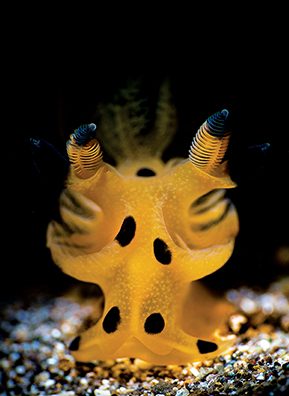
Jelajahi Lebih Lanjut
See more of Gutsy Tuason’s work in a bonus photo gallery and in this video.
© Alert Diver — Q2 2022
